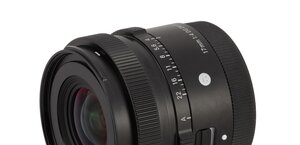Nikon Nikkor AF-S 70-200 mm f/4.0G ED VR
5. Chromatic and spherical aberration
Chromatic aberration
The longitudinal chromatic aberration is not corrected in a perfect way - you can notice slight colouring of blurred areas, especially near the maximum relative aperture. Fortunately this effect is not especially pronounced and it won’t be bothersome in most cases.
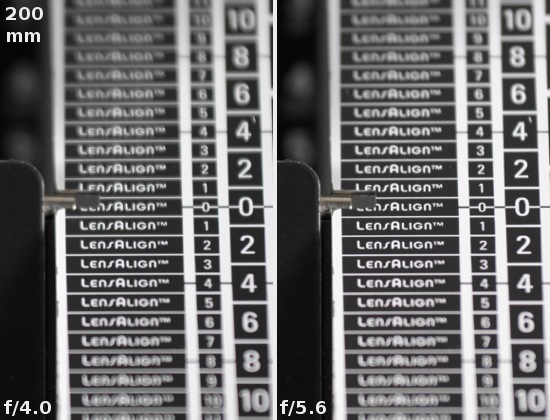 |
Please Support UsIf you enjoy our reviews and articles, and you want us to continue our work please, support our website by donating through PayPal. The funds are going to be used for paying our editorial team, renting servers, and equipping our testing studio; only that way we will be able to continue providing you interesting content for free. |
- - - - - - - - - - - - - - - - - - - - - - - - - - - - - - - - - - - - - - - - - - - - - - - -
The way the lens corrects the lateral chromatic aberration deserves to be praised for a change. The result we got respectively on the edge of DX and FX sensors are presented on the graphs below.
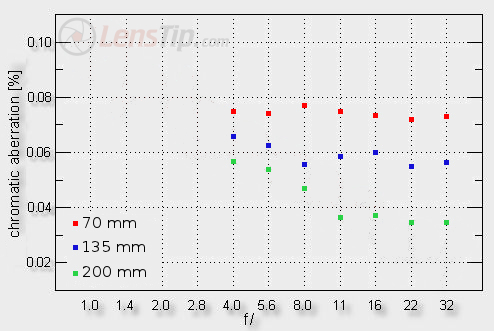
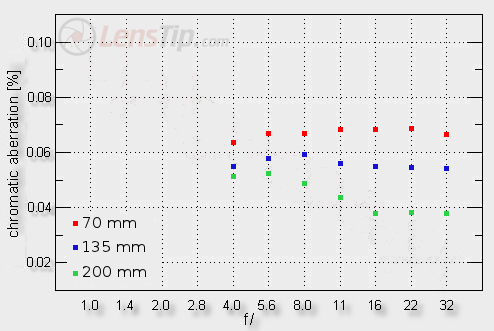
At no focal length value and aperture combination the lateral chromatic aberration exceeds a value of 0.08% - it means it is low everywhere. The biggest chances to notice it you have at the shortest focal length where it reaches momentarily a medium level. At longer focal lengths there will be no problems at all because the aberration decreases to a negligible level.
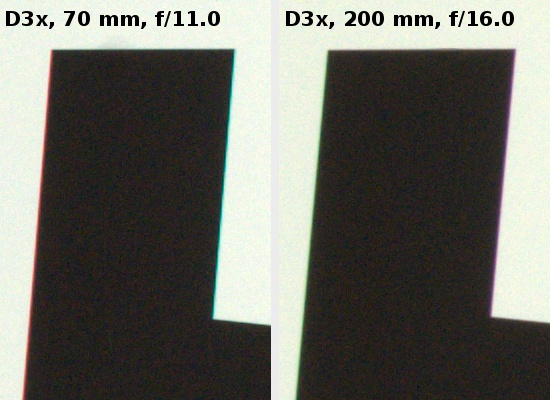 |
Spherical aberration
Spherical aberration makes itself felt at the longest focal length where it is one of the factors limiting the image quality and making the 200 mm focal length a bit weaker than the rest. The influence of that aberration can be noticed in the first photo, presented in this chapter. When you pass from f/4.0 to f/5.6 the depth of field moves toward the objects situated further in the frame. Such an effect, called ‘focus shift’ is exactly connected with the not entirely corrected spherical aberration.
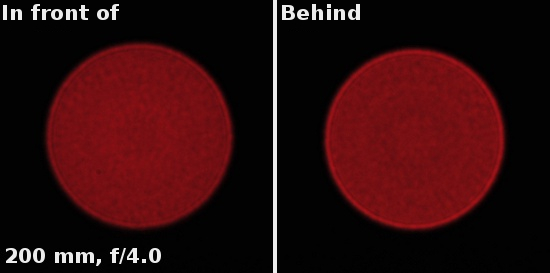
The influence of that aberration can also be noticed in light circles. The rim of a circle you get behind the focus is noticeably lighter than the rim of a circle in front of the focus and the former also features a lighter centre.





